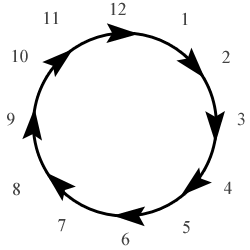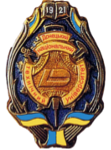Тimproving the quality of consumer goods in the relationships between trade and production.
Author: Chebotarev Artem
Goals and objectives:
- To define the conception of produce quality and quality indicators
- To investigate the system of quality control at an enterprise and the necessity of its adoption at the enterprises of Ukraine
- To investigate the system of quality control at an enterprise and the necessity of the adoption of the technical control department at enterprises of any kind of production
- To investigate the quality of consumer goods at the Ukrainian market
- To identify the existing quality problems with the consumer goods at the Ukrainian market
- To find the ways to solve the stated problems
Introduction
Nowadays, the goods, having appeared at the free Ukrainian market, have obtained some new characteristic which is not much discussed in conditions of the state monopolism. The matter is about the products’ competitiveness, i.e. the ability of the products to compete among those of the same kind. The competing firms are aiming at satisfying the consumers’ needs as fully as possible and taking money from them as much as possible. The world known firms strive for getting the maximum amount of money for their qualitative goods, but at the market there also are the firms cheating on the consumers by selling the goods of poor quality or even counterfeited goods.
That is why, at the modern formation stage of the free Ukrainian market, the actuality of this problem lies in thorough investigation of the goods’ characteristics, detection of their naturalness and revelation of the counterfeited goods. Despite of the law about “Protection of Consumers accepted in Ukraine and consumers’ communities formed in every region, in fact, an individual consumer remains face to face in their opposition to manufacturers of any kind. [1]
Actuality
One of the most important factors of production efficiency is improvement of the products and services quality. In the conditions of the market competition, the quality is the main criterion when choosing the goods. The complex conception of quality is one of the effective ways of a manufacturer’s survival and further development in the established economic conditions.
The high quality of any produce and services is considered to be the most significant factor, determining their competitiveness. To provide competitiveness, manufacturer should work thoroughly on quality improvement and its systematic control. In other words, any enterprise wishing to strengthen their position in severe competition and maximize their income should pay much attention to the process of quality control.
All the above said determines the actuality of the investigation of the problem of the goods quality control in trade and production relations.
Goods quality, indicators and estimation of the quality standard
The modern world market appears to be the arena of the severe fight of the production suppliers who use different methods and means of suppression of their competitors thus providing for themselves some additional advantages. The main means in this fight is the improvement of the production technical level and the quality of the goods produced, which corresponds as fully as possible to the needs of concrete consumers. When studying the goods, a customer estimates their specific characteristics expressed in physical, electrical, chemical and other units and compares them with the indicators of one’s needs that have some measures. In this case, it is reasonable to talk about the existence of production quality indicators determining customers’ needs.
According to the International ISO standard 9000:2005, Production Quality is a complex of properties and characteristics of produce or a service, which make this produce or a service able to satisfy specific or estimated needs.
Indicator of Production Quality is a quantitative estimation of one or several characteristics of production. The main quality indicators are stated in manufactures’ standards (international, national, industrial) and in their technical conditions.
The following groups of the indicator system are used for estimation of the production quality:
- 1. Common groups of indicators, characterizing the general quality level of a product: the amount of progressive types of products in general output, production grade of quality (in light or cement industries), economic effect and additional inputs in quality improvement.
- Complex groups of indicators characterizing several properties of a product including design, production and exploitation costs.
- Single groups characterizing one of a product’s properties. They are divided into following indicators:
- Purpose;
- Reliability and Functionality;
- Technological effectiveness;
- Ergonometric;
- Esthetic;
- Standardization and unification;
- Patent legal;
- Transportability;
- Economic;
Technical production level is the system of indicators characterizing qualitative properties of a product and their correspondence to the best international samples.
Estimation of product technical level must be held during its whole life cycle: research and design, production, circulation and sale, exploitation and consumption.[2]
Production Quality Control System
Provision with production quality is realized according to the quality control system functioning at an enterprise. In most cases when negotiating foreign economic contracts, the demands of a supplier’s document-based quality control regulations and a consumer’s (or the third party’s) right to control it at any time are discussed.
A supplier, having a certified quality system based on stated international standards, guarantees the quality on all stages of their product’s life cycle, as well as success in their competition fight.

- — marketing and market investigation;
- — design and development of the product;
- — process planning and development;
- — purchases;
- — service production and offer;
- — inspection;
- — packing and storage;
- — selling and distribution;
- — installation and exploitation;
- — maintenance and service;
- — post-sale activity;
- — utilization and recycling at the final exploitation term.
Рис.1–Pic.1-General stages of a product’s life cycle. (Animate Personnel: 7. Repeats: no limit. Size: 24,8 KB. To create the animation used: Photoshop)
Quality system is a complex of organizational structure, responsibility, means, processes and resources providing a specific policy in production quality sphere. It is planned with consideration to the consumer, concrete product, its whole life cycle (the principle of “quality loop” pic.1), combination of monitoring and quality improvement and prevention of possible problems.
The quality system must:
- - provide quality monitoring at all stages of products’ life cycle;
- - provide the participation of all employees of an enterprise at the quality monitoring;
- - establish responsibility at all stages of monitoring;
- - provide quality continuity together with costs reduction;
- - provide preventive inspection of the possible discrepancy and defects;
- - provide the necessity of defects detection and their unavailability to production and to the consumer;
- - establish the System’s order of periodic inspection, analysis and improvement;
- - establish and provide the order of the documentary base of all procedures of the system.
Production Quality Monitoring is the process of establishing, providing and supporting the necessary quality level of the products during their development, production, circulation or exploitation, or consumption with the help of systematic quality control and stable influence on conditions and factors affecting the products’ quality.[2]
Organization of the technical control at an enterprise
The quality of a product mainly depends on the efforts made in a production sphere. The whole production system must be oriented on the improvement of the products’ quality.
One of the elements of the quality control system is the correct organization of the technical control within an enterprise.
The concept of technical control is understood as the inspection of adherence to the quality demands of a product at all stages of its production and all production conditions providing the quality.
The main task of the technical control lies in the output of the qualitative and complete products corresponding to the standards and technical conditions.
The technical control of the products’ quality is fulfilled directly through the Technical Control Department (TCD), which is an independent organization department.
The head of TCD is subordinate directly to the head of an enterprise, and his/her employees are subordinate only to their head of the department.
The TCD personnel depend on the size of an enterprise and consist of separate offices, groups or executors of:
- technical formal acceptance of the materials, half-finished products arriving from the suppliers;
- workshop control;
- control of instruments of production;
- test and delivery of finished production;
- defect assessment and analysis.
- control of fuel, raw and half-finished materials;
- control of equipment conditions;
- control of the technological process at all stages of production; products quality control; defect prevention, detection and assessment; detection of the factors causing defects;
- taking measures to remove defects and reclamations, improve the quality of products.[2]
- control of raw materials used for production;
- correspondence of the production technology with the international standards;
- control of temperature conditions and other demands to the storage of products before delivery.
- presence of all the necessary documentation;
- correct marking
- integrity of packing
- correspondence of the production terms on general and separate pickings with those stated in the documents;
- adherence to the necessary temperature conditions during the delivery of the products.
- Consideration and improvement of the state’s legislative base;
- To toughen punishment for ignoring the correspondence with the regulatory base;
- Technical re-equipment of the laboratories;
- Training of qualified specialists in the sphere of quality;
- Help provided by the state bodies.
- Chepurnoy I. P. "Identification, falsification and examination of goods." Scientifically. 2008. 460s.
- Sinica L. M."Production of" Minsk, 2004. 521p.
- RetailStudio.org. "In networks Fozzy tightened quality control of foodstuffs" from 9.07.2009,
http://www.retailstudio.org/news/6993.htm - Anna Kozak "expired goods are in each store. The newspaper "Pravda Dneprovskaya» № 20 (15423) 28.05.2010,
http://dneprovka.dp.ua/t6170/ - Feigenbaum A. "Quality control" Economics 1986. 471p.
- A. I. Momot "Quality management and quality system elements" textbook. TSUL. 2007. 368p.
- The situation on the supply of consumer goods and major regulatory environment of contractual relations №888
The functions of the TCD include the following:
Production quality control in trade
The quality control traditionally starts at a manufacture’s enterprise. Major suppliers go through the external auditing while an enterprise is assessed in correspondence with their production made and the stated quality standards. When cooperation with a new supplier begins, auditing is fulfilled before the first production delivery.
Some basic points checked during the production auditing:
Finally, the way a manufacturer deals with reclamations is also seriously considered, since it shows its ability to detect and tackle the existing problems, thus improving the whole quality monitoring system.
The next step for the production quality control is the organizational system of the inner logistic group. All products are delivered to the shops via distributive centers or via direct deliveries to the shops. Every storehouse of a “cross-docker” type has its own temperature mode necessary for separate groups of products: for “shelf” products, for frozen and refrigerated products, for refrigerated fresh fish and for fresh vegetables and fruit.
As soon as the production is delivered to the storehouse, qualitative and quantitative acceptance is realized. There are a number of demands for the production correspondence:
All manufacturers thoroughly prescribe the above mentioned demands in their contracts. Besides, the staff of the quality department regularly send the instructions including all quality parameters of their products.[3]
The quality problems of the products of general consumption at the Ukrainian market
Problem 1. Reduction in demands of the legislative base.
According to the Cabinet of Ministers, the Protection of Consumers Department has been prohibited to fine the manufacturers of poor quality products since the 1st of June, 2010. The resolution must be put into correspondence with the legislation during one month. This resolution gives an obvious advantage to manufacturers, but not to the consumers, who now have much more chances to get poisoned.
Problem 2. There no money for the laboratory examinations.
Detection of the products of poor quality is realized via organoleptic examination when a product’s form, packing, taste, colour, smell, etc are assessed. Ukraine has enough laboratories for examination, but the state does not assign means for this.
“We carried out the necessary examinations at the expense of a managing party – which means that the shops used to pay for this. In the end of 2007 an amendment was introduced to the law claiming that the examinations should be held at the expense of the state.” [4]
Problem 3. To sell “at any cost”.
Some supermarkets correct the production date of the products when the sell-by date has run out. That is why you should pay attention to the markers which are impossible to correct. It is better to avoid buying the products where the production date is marked on the supermarket’s sticker, since it can be easily changed.
Problem 4. Now, Ukrainian and foreign manufactures are not obliged to have a quality certificate to sell their products in our shops.
Many experts foresee that even more low quality products such as sausages, cheese, canned food will appear on our shelves.
The euphoria connected with Ukraine’s joining to the World Trade Organization is gradually turning into severe sobering. Our politicians did their best to make Ukraine a member of WDO, having made all demanded concessions and agreed to all conditions. Carrying out the given promises does no good for the Ukrainian citizens. One of the promises fulfilled by the state was the abolition of the necessary certification for a large group of food products.
On December, 23 the Cabinet of Ministers cancelled the order of Ukraine’s State Committee on Technical Regulation and Consumer Policy “About the approval of the production list subject to the necessary certification” issued on Februry, 1, 2005. The order concerned 17 groups of food products such as tea, coffee, chocolates, oil, margarine, hard sorts of cheese, butter, canned food, smoked sausages, etc. However, the list of the necessary certified products still contains alcohol drinks and food products for children. It was the World Bank who compelled our government officials to make this concession. That was one of the conditions providing a $500 mln credit allocation to Ukraine.
Many experts think that this decision will work against Ukrainian consumers. It can lead to deterioration of the quality of the food products made not only by Ukrainian manufactures but by foreign ones, too.
Unfortunately, the number of the existing problems concerning the quality of the goods offered to our consumer is not listed till the end.
The ways to remove the quality problems of the products at the Ukrainian market
An important notice:
The given paper has been written on the base of the master’s research work which is not yet finished. The planned term is December, 2010. In my research work I will try to present the existing quality problems concerning the products at our national market in more detail, and offer the methods of their removal.
Literature



